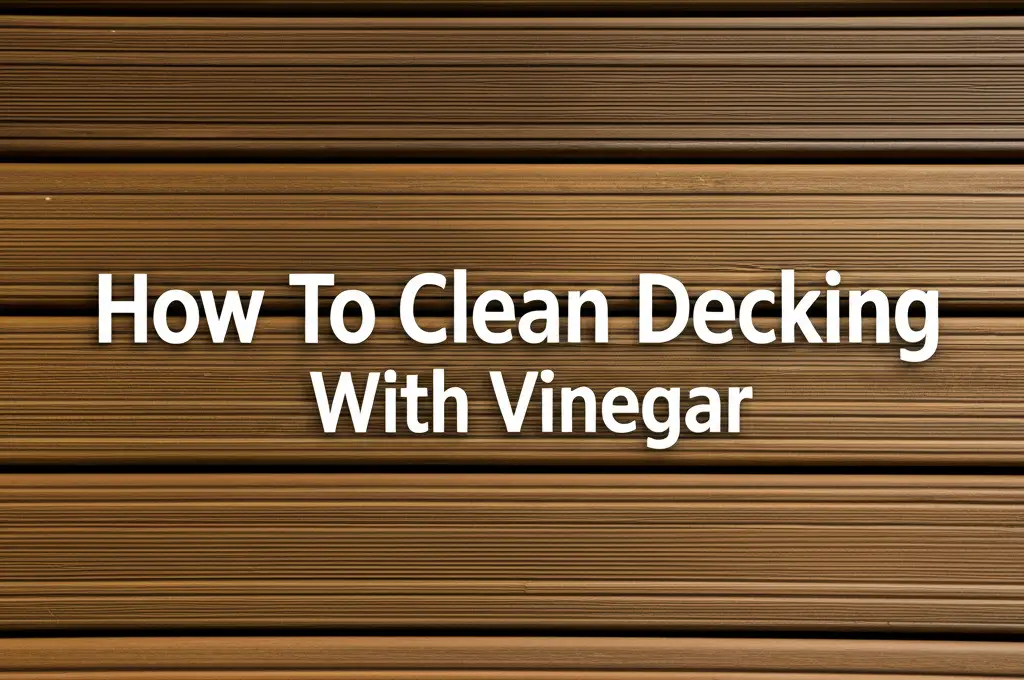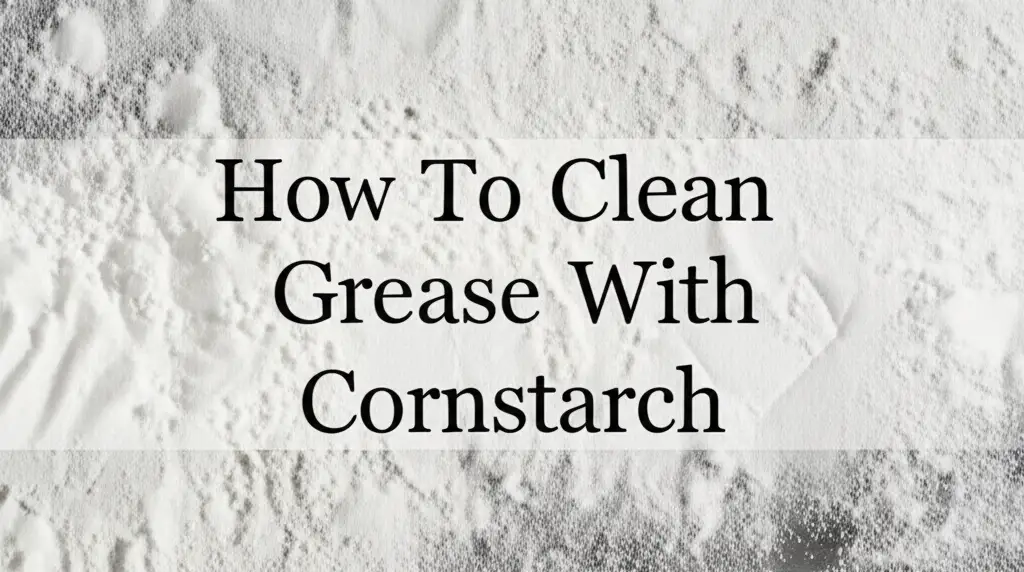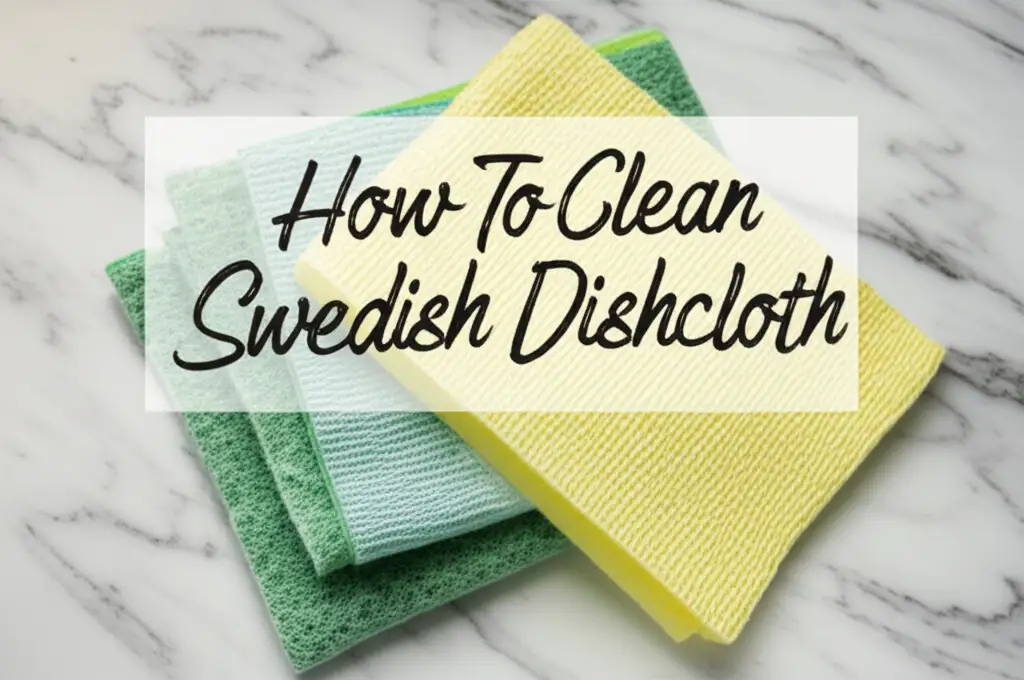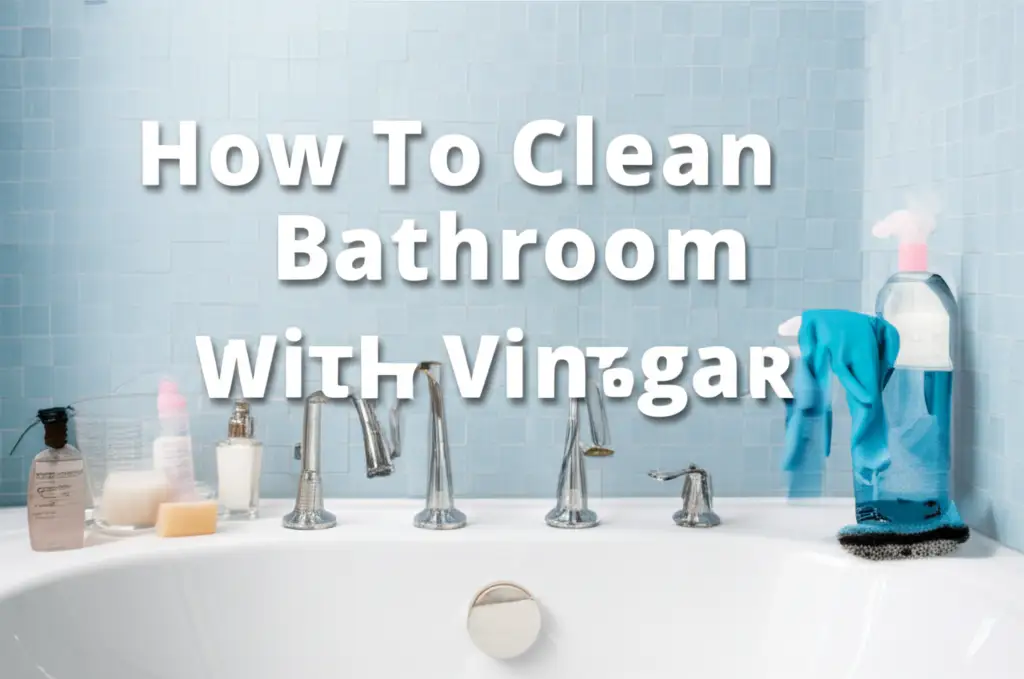· Home Cleaning · 16 min read
How To Clean Decking With Vinegar

Sparkling Decks: How To Clean Decking With Vinegar Safely
Imagine stepping onto your deck. The wood is dull, green patches of algae appear, and dirt covers the surface. You wish for a clean, inviting outdoor space. Many people use harsh chemicals for deck cleaning. But what if a common pantry item holds the secret to a sparkling deck?
Vinegar is a natural, effective, and eco-friendly cleaning agent. It tackles dirt, grime, mold, and mildew. This guide shows you how to clean decking with vinegar. We will cover preparation, different cleaning solutions, and steps for various deck materials. Get ready to transform your deck into a beautiful outdoor oasis.
Takeaway
- Gather all necessary tools and materials before you begin.
- Always test vinegar solutions on a small, hidden area first.
- Sweep the deck thoroughly to remove loose debris.
- Apply vinegar solutions evenly and let them sit briefly.
- Rinse the deck completely after cleaning to prevent residue.
Clear and Concise Answer
You can clean decking with vinegar by mixing it with water or other natural ingredients like baking soda or dish soap. This natural solution effectively removes dirt, grime, mold, and mildew. Always test the solution on an inconspicuous area first, and ensure a thorough rinse after cleaning to protect your deck.
Understanding Vinegar: Why It’s a Deck Cleaning Ally
Vinegar is a surprisingly powerful cleaner. Its acidic nature makes it excellent for breaking down dirt and organic matter. This natural property helps lift grime from various surfaces. For outdoor areas like decks, vinegar offers a safe and environmentally conscious choice.
Acetic acid is the active component in vinegar. This acid dissolves mineral deposits, grease, and many types of stains. It also possesses mild antiseptic properties. This means it can help inhibit the growth of mold and mildew. This makes it an ideal solution for outdoor environments.
Common household white vinegar is perfect for deck cleaning. It contains about 5% acetic acid. This concentration is strong enough to clean effectively. It is still mild enough not to harm most deck materials when diluted properly. Avoid using stronger industrial vinegars unless you know how to dilute them safely. Always consider the type of deck material you have.
Many prefer vinegar for outdoor cleaning tasks. It does not introduce harsh chemicals into your garden or lawn. This is important if you have plants or pets near your deck. Using vinegar also eliminates the need for expensive, specialized deck cleaners. It is a cost-effective and readily available option for maintaining your outdoor living space.
Preparing Your Deck for a Vinegar Treatment
Proper preparation is vital for effective deck cleaning. A good start ensures the vinegar solution works its best. It also prevents damage to your deck or surrounding areas. Begin by clearing the deck of all furniture, planters, and other items.
Next, sweep the deck thoroughly. Remove all loose debris such as leaves, dirt, and dust. A stiff-bristled broom works well for this task. Pay attention to cracks and crevices where debris collects. This step exposes the deck surface, allowing the cleaning solution to penetrate effectively.
Inspect your deck for any damaged areas. Look for loose boards, protruding nails, or significant cracks. Address these issues before you apply any cleaning solution. Cleaning around damaged areas can worsen them. You want a safe and stable surface before starting.
Protect nearby plants and landscaping. While vinegar is natural, strong concentrations can harm delicate foliage. Cover any nearby plants with tarps or plastic sheeting. You can also thoroughly wet them down with water before and after cleaning. This dilutes any vinegar overspray.
Finally, pre-wet your deck surface. Use a garden hose to lightly spray down the entire deck. This helps to loosen some surface dirt. It also prepares the wood or composite material to absorb the cleaning solution evenly. This step is important for getting a consistent clean.
Simple Vinegar Cleaning Solutions for Decking
Vinegar is versatile. You can use it alone or combine it with other common household items. Different mixtures tackle varying levels of dirt and grime. I find these solutions cover most deck cleaning needs. Start with the simplest one for light cleaning.
Basic Vinegar and Water Solution
This is your go-to for general dirt and light mildew. It is mild and very effective for regular maintenance.
- Ingredients:
- 1 part white vinegar
- 2 parts warm water
- Directions:
- Mix the vinegar and warm water in a large bucket.
- Apply the solution generously to your deck surface using a mop, sponge, or sprayer.
- Let the solution sit for 15-20 minutes. This allows the vinegar to break down dirt.
- Scrub the deck with a stiff brush. Work in the direction of the wood grain if cleaning a wooden deck.
- Rinse the deck thoroughly with clean water from a garden hose.
Vinegar and Dish Soap Blend for Tougher Grime
Add dish soap for extra degreasing power. This blend helps lift sticky residues and heavier dirt.
- Ingredients:
- 1 cup white vinegar
- 1 gallon warm water
- 1 tablespoon liquid dish soap (biodegradable is best)
- Directions:
- Combine vinegar, warm water, and dish soap in a bucket. Stir gently to mix.
- Apply the mixture to your deck. Ensure even coverage across the dirty areas.
- Let it soak for 20-30 minutes, allowing the soap to loosen grime.
- Scrub with a deck brush. Pay extra attention to high-traffic areas.
- Rinse the entire deck thoroughly until no soap residue remains.
Vinegar and Baking Soda Paste for Spot Cleaning
For individual stubborn spots, a paste works wonders. Baking soda provides abrasive action. For more general cleaning with these ingredients, you might find tips on how to clean with vinegar and baking soda. This mixture creates a fizzing action.
- Ingredients:
- 1/2 cup baking soda
- 1/4 cup white vinegar (or enough to form a paste)
- Directions:
- In a small bowl, slowly add vinegar to baking soda. Mix until a thick paste forms.
- Apply the paste directly to stubborn stains or mold spots.
- Let the paste sit for 10-15 minutes. The fizzing action helps lift the stain.
- Gently scrub the spot with a soft brush.
- Rinse the area thoroughly with clean water.
- Avoid using this paste over large areas of the deck, as it can be difficult to rinse completely.
Always test any new solution on a small, inconspicuous area of your deck first. This ensures it does not cause discoloration or damage. Different deck materials react differently. This simple test saves you from potential problems.
Tackling Stubborn Stains: Mold, Mildew, and Algae with Vinegar
Decking often faces challenges from mold, mildew, and algae. These growths thrive in damp, shady conditions. They make your deck look unsightly and can create slippery surfaces. Fortunately, vinegar is an excellent natural solution for these common issues. I have personally seen how effective it can be.
Vinegar’s acetic acid is a natural fungicide and bactericide. This property makes it effective against various organic growths. It breaks down the cellular structure of mold, mildew, and algae. This helps lift them from the deck surface. Using it prevents their return for a period.
For general mold and mildew, a stronger vinegar solution is best. Mix equal parts white vinegar and water. For example, use one gallon of vinegar to one gallon of water. Apply this solution to the affected areas. A garden sprayer can make application easy for larger spots. Make sure the area is saturated.
Allow the solution to sit for at least 30 minutes. For very stubborn or thick growths, let it soak for an hour. The longer contact time gives the vinegar more opportunity to work. You will likely see the mold or algae start to change color or loosen. This indicates the vinegar is doing its job.
After soaking, scrub the affected areas vigorously. Use a stiff-bristled brush. Work in small sections to ensure thorough cleaning. You will notice the mold and mildew lifting away. Rinse the deck thoroughly with clean water. Ensure all residues are gone. For more details on tackling mold specifically, you can learn more about how to clean mold with vinegar.
Repeat the process if necessary for extremely tough stains. Some very old or deeply embedded growths may need a second application. Regular cleaning helps prevent these growths from establishing themselves. Consider cleaning your deck with vinegar at least once a year. This keeps your outdoor space looking its best.
Cleaning Different Decking Materials with Vinegar
Decks come in various materials. Each type responds differently to cleaning agents. Understanding these differences helps you choose the right approach. Vinegar is generally safe for most decking. Still, slight variations in method ensure the best results and prevent damage.
Cleaning Wooden Decks with Vinegar
Wood decks are popular. They offer a classic, natural look. Common types include pressure-treated wood, cedar, and redwood. Vinegar is excellent for cleaning wood. It removes dirt, mildew, and light stains without harsh chemicals.
When cleaning wood, dilute white vinegar with water. A 1:2 ratio (1 part vinegar to 2 parts water) is often sufficient. For tougher grime, you can use a 1:1 ratio. Apply the solution with a sprayer or a soft-bristled brush. Allow it to sit for 15-20 minutes. Scrub gently along the wood grain. This prevents splintering or scratching. Rinse thoroughly with a hose. Avoid high-pressure washers on wood unless you know how to use them safely. They can damage the wood fibers. Regular cleaning helps preserve your deck’s appearance. You can find more tips on cleaning wood surfaces, such as how to clean wood floors with vinegar.
Cleaning Composite Decks with Vinegar
Composite decking is low-maintenance. It is made from a blend of wood fibers and plastic. This material resists rot and insects. However, it can still accumulate dirt, mold, and mildew. Vinegar works well for composite decks too.
Use a milder vinegar solution for composite materials. A 1:3 or 1:4 ratio of vinegar to water is usually enough. Apply the solution with a soft brush or sponge. Let it sit for about 10-15 minutes. Composite surfaces are less porous than wood. They do not need as long a soaking time. Scrub gently in a circular motion. Rinse completely with clean water. Avoid abrasive scrubbers or harsh chemicals. They can scratch or damage the composite surface. Vinegar keeps your composite deck looking fresh without harshness.
Important Considerations
Always perform a patch test on a hidden area of your deck before widespread application. This is true for both wood and composite. Check for any discoloration or adverse reactions. This small step prevents potential issues. Rinse thoroughly after any vinegar treatment. Residue can attract dirt or leave a dull finish over time. Proper rinsing ensures a clean, residue-free surface.
Step-by-Step Guide: How to Clean Your Deck with Vinegar
Cleaning your deck with vinegar is a straightforward process. Following these steps ensures a thorough and effective clean. I have followed these steps myself many times. You will achieve a beautiful result.
Step 1: Prepare the Area
First, clear everything off your deck. Move furniture, planters, grills, and any decorative items. Sweep the deck thoroughly to remove loose dirt, leaves, and debris. Use a stiff broom to get into cracks and corners. Protect nearby plants and delicate landscaping by covering them with plastic sheets or tarps. You can also water them generously before and after cleaning.
Step 2: Mix Your Vinegar Solution
Choose the right solution based on your deck’s condition.
- For light dirt and maintenance: Mix 1 part white vinegar with 2 parts warm water.
- For general grime and light mildew: Use a 1:1 ratio of white vinegar to water.
- For tough mold, mildew, or ingrained dirt: Mix 1 part white vinegar with 1 tablespoon of biodegradable dish soap per gallon of solution. Alternatively, for very tough spots, make a paste with baking soda and a small amount of vinegar. For more general cleaning with these ingredients, consider how to clean with vinegar and baking soda.
Step 3: Pre-Wet the Deck
Lightly spray the entire deck surface with water from a garden hose. This helps to loosen some surface dirt. It also prepares the deck material to absorb the cleaning solution evenly. Avoid soaking the deck too much; a light mist is sufficient.
Step 4: Apply the Cleaning Solution
Apply your chosen vinegar solution to the deck. You can use a garden sprayer for large areas. A mop, sponge, or soft-bristled brush works for smaller sections or more controlled application. Work in manageable sections. Ensure the solution covers the entire surface you are cleaning.
Step 5: Let It Sit
Allow the vinegar solution to sit on the deck for 15-30 minutes. For stubborn stains or heavy mold, extend the time up to an hour. This dwell time allows the acetic acid in the vinegar to break down dirt, grime, and organic growths.
Step 6: Scrub the Deck
After the soaking period, scrub the deck surface. Use a stiff-bristled brush for wooden decks. Always scrub in the direction of the wood grain. For composite decks, use a soft-bristled brush or mop. Scrub gently in circular motions. Pay extra attention to high-traffic areas or spots with visible stains.
Step 7: Rinse Thoroughly
Rinse the entire deck with clean water from a garden hose. Start from the highest point and work your way down. Ensure all cleaning solution and loosened dirt are completely removed. Do not let the solution dry on the deck. Rinse until the water runs clear and no residue remains.
Step 8: Allow to Dry
Let your deck air dry completely before replacing furniture or walking on it extensively. This can take several hours depending on weather conditions. Enjoy your freshly cleaned, sparkling deck!
After the Clean: Maintaining Your Deck’s Freshness
Cleaning your deck is an important step. However, regular maintenance helps keep it clean longer. This reduces the need for frequent deep cleaning. A well-maintained deck enhances your outdoor living space for years. I always recommend proactive care.
After cleaning with vinegar, consider applying a deck sealer. A good sealer protects the wood from moisture, UV rays, and mildew. It helps repel dirt and prevents stains from setting in. For wooden decks, reapply sealer every 1-3 years. Follow the manufacturer’s instructions for the specific product you choose. This creates a protective barrier.
Regular sweeping is a simple yet effective maintenance task. Sweep your deck at least once a week. This removes leaves, dirt, and other debris before they can accumulate. Debris can trap moisture, leading to mold and mildew growth. It also helps prevent stains from crushed organic matter.
Address spills immediately. Food, drinks, or pet waste can cause stains if left too long. Blot spills promptly with a clean cloth. Then, wipe the area with a mild soap and water solution. Rinse the spot thoroughly afterward. Quick action prevents stubborn marks.
Trim overhanging branches. Trees provide shade, but fallen leaves and moisture can promote mold and mildew. Trimming branches helps more sunlight reach your deck. This promotes faster drying after rain or morning dew. Good air circulation also discourages growth.
Consider using deck furniture pads. These pads protect the deck surface from scratches and scuffs. They also prevent moisture from accumulating directly under furniture legs. This helps preserve the deck’s finish and material. These small steps make a big difference over time.
Safety Precautions and Things to Avoid When Cleaning with Vinegar
While vinegar is a natural cleaner, it is important to use it safely. Following precautions protects you, your deck, and your environment. Always keep safety in mind during any cleaning task.
First, always wear protective gear. Gloves protect your hands from prolonged exposure to acidic solutions. Eye protection, such as safety glasses, prevents splashes from reaching your eyes. Though vinegar is mild, it can cause irritation. This is a simple step for personal safety.
Test any vinegar solution on an inconspicuous area of your deck first. This is crucial for both wood and composite materials. Apply a small amount and let it sit for the recommended time. Rinse it off and check for any discoloration, etching, or other adverse reactions. Different deck finishes or materials can react differently. This simple test prevents damage to your entire deck.
Avoid using undiluted vinegar on your deck. While it might seem stronger is better, full-strength vinegar can be too harsh. It can potentially strip sealants, dull finishes, or even damage some deck materials over time. Always dilute white vinegar with water as recommended in this guide. This ensures effective cleaning without excessive risk.
Do not mix vinegar with chlorine bleach. This combination creates highly toxic chlorine gas. This gas is very dangerous to inhale. Always use vinegar by itself or with other safe cleaning agents like dish soap or baking soda. Never combine cleaning products without knowing they are safe together.
Be careful when using a pressure washer. While some homeowners use them for decks, they can damage wood or composite if used improperly. High pressure can splinter wood, strip finishes, or even force water into composite materials. If you use a pressure washer, do so at a low setting. Hold the nozzle at a safe distance and always move with the grain of the wood. If you are unsure, stick to a garden hose.
Ensure good ventilation if working in an enclosed or semi-enclosed deck area. While vinegar fumes are not as harmful as chemical cleaners, strong concentrations can be irritating. A well-ventilated area helps disperse any lingering odors. Always rinse your deck thoroughly after cleaning. This removes all cleaning solution and loosened dirt. Residue can attract more dirt or leave a dull film.
FAQ Section
Is vinegar safe for all decking materials?
Vinegar is generally safe for most wood and composite decking. It is a mild acid that effectively cleans dirt and organic growth. However, always perform a patch test on a hidden spot first. This ensures no discoloration or damage occurs. Some delicate finishes might react differently.
How often should I clean my deck with vinegar?
The frequency depends on your deck’s exposure to elements. For most decks, a thorough cleaning with vinegar once or twice a year is sufficient. More frequent light cleaning, like sweeping and spot cleaning, helps maintain its appearance. Consider cleaning more often in humid climates.
Can vinegar damage deck seals or stains?
Undiluted vinegar can potentially strip some deck sealants or stains over time. This is why dilution is essential. Using recommended diluted solutions minimizes this risk. Always rinse thoroughly after cleaning to prevent any residue buildup. A patch test helps confirm safety.
What is the best type of vinegar to use for deck cleaning?
White distilled vinegar is the best choice for deck cleaning. It contains about 5% acetic acid, which is effective yet mild enough when diluted. Avoid apple cider vinegar as it can leave a sticky residue. Also, industrial-strength vinegars are too concentrated for general use.
Does vinegar kill mold on decks?
Yes, vinegar can effectively kill and remove mold, mildew, and algae on decks. Its acetic acid helps break down these organic growths. For best results, use a 1:1 vinegar-to-water solution. Allow it to soak for at least 30 minutes before scrubbing and rinsing thoroughly.
Conclusion
Cleaning your decking with vinegar is a powerful, eco-friendly, and cost-effective solution. You have learned the importance of proper preparation, the versatility of different vinegar cleaning solutions, and how to tackle common deck issues like mold and mildew. We covered specific approaches for both wooden and composite decks, alongside a comprehensive step-by-step guide to ensure a sparkling finish. Remember to always prioritize safety.
Adopting vinegar for your deck maintenance not only gives you a clean outdoor space but also protects your surrounding environment. This natural method provides peace of mind, knowing you are using safe ingredients. Regular cleaning with vinegar keeps your deck looking its best. Get ready to enjoy your beautiful, refreshed outdoor living area. Start your vinegar deck cleaning project today and see the remarkable difference!
- decking cleaning
- vinegar cleaner
- natural deck cleaner
- outdoor maintenance
- eco-friendly cleaning
- wood deck care
- composite deck care




